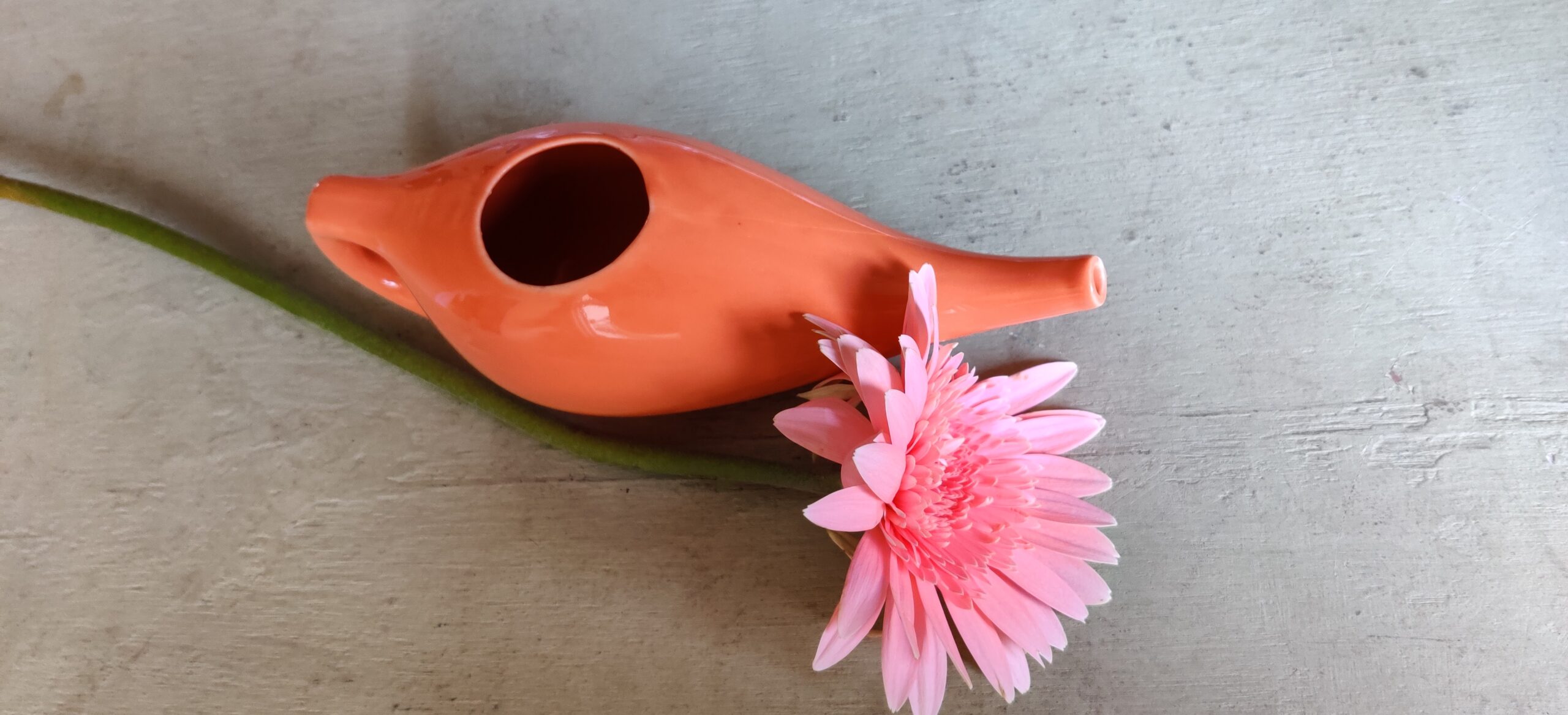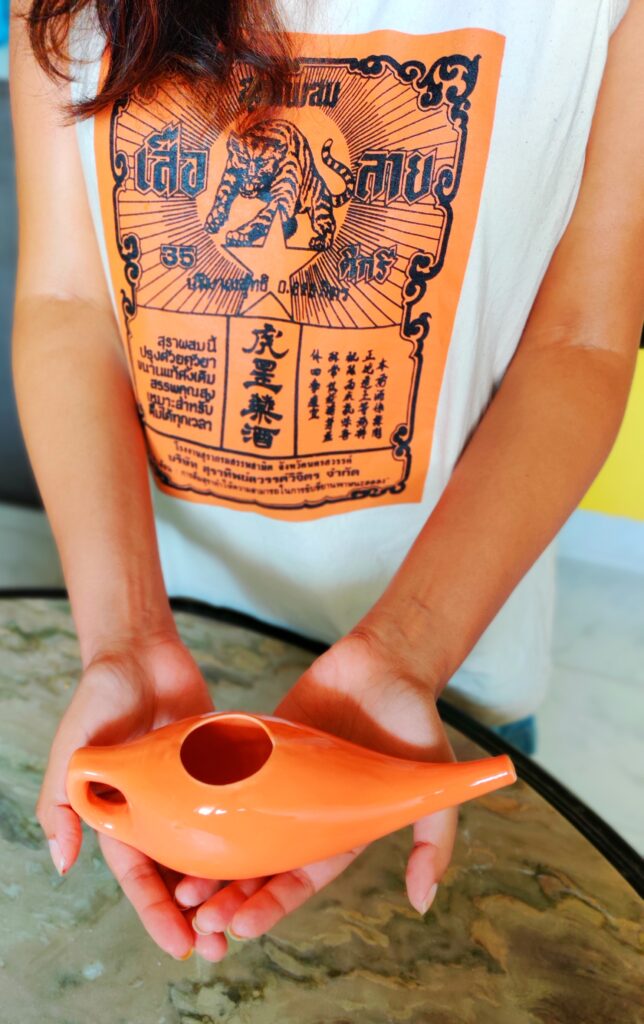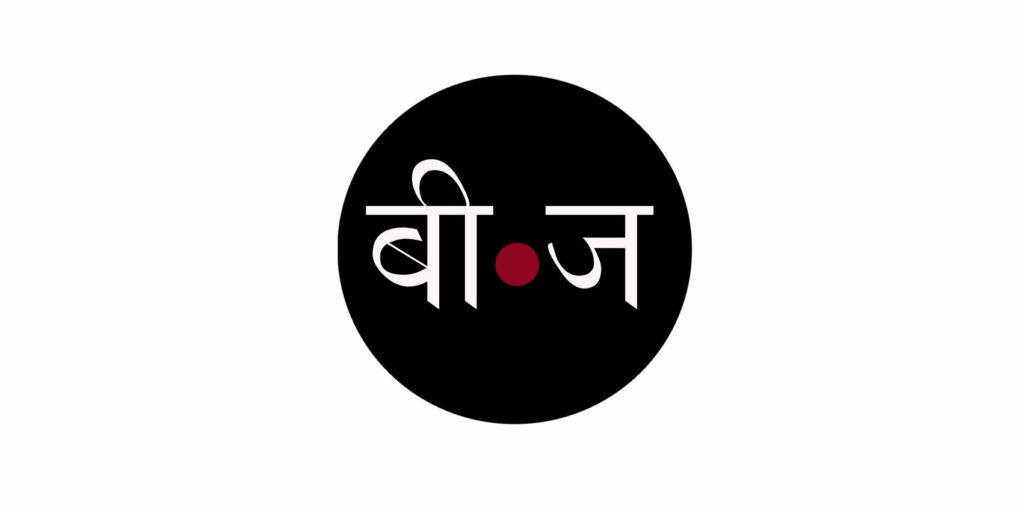Why is this a good time to start jal neti

I remember as a kid watching fascinating videos of loin clad yogis performing acts of what I thought were miracles. They would tilt they head and pour liquid through their nose, nasal irrigation or jal neti, followed by passing a thread through the nostrils, sutra neti. These seemed magical, out-of-reach practices, beyond the reach of a mere mortal.
So, how does this work?
I never had a desire or an opportunity to learn, until now, and then decided to write a piece for BeejLiving. I read a post which went viral on Facebook of an American woman who had very mild coronavirus symptoms, who mentioned she continued her jal neti practice while ill. Eventually she got better. (Disclaimer: there is no scientific connection of practicing jal neti and curing coronavirus; this was part of her dincharya or daily routine, so she continued with it) For someone who has been beset by allergies in the recent past, with the construction in the city on an overdrive, I spend up to an hour on waking up sneezing incessantly. It’s something so annoying, embarrassing and in certain ways, debilitating, to not be able to do anything till the allergies subsided.

Then, in a conversation with my sister who lives in the US, I found out that she and the kids had been using neti pots and their western siblings, spray bottles for years, bypassing pollen season that laid them low. And at that very time, Kavita Khosa, the founder of Pure Earth, put up a post on the neti pot too.
Diving deep in to jal neti
I had ordered a white ceramic pot (you can order ceramic or stainless-steel pots), simply because it seemed easier to clean than the metal pot. Instead, a bright orange one landed up at my doorstep. I watched a couple of videos and asked the best way to use it. I recommend you go to a practitioner to use it, because water can end up in your throat and also your ear.
The best way I found was to bend forward till your torso is parallel to the ground, tilt your head at 45 degrees, put the nozzle in your nose, lift your elbow and gently pour the water while breathing through your mouth. Don’t stuff it in, that it pushes against your sputum. Of course, it’s going to go in all the wrong passages in the beginning, you’ll feel like you’re going to choke, and you might not be able to do it at length. After you finish each nostril, follow it up with kapalbhati. You might not get it right overnight, be patient, it takes practice.
It’s critical to use distilled or filtered and boiled water only, because brain-eating amoeba lurk in tap water. (Use slightly warm water with the recommended amount of jal neti salt. I ordered them both on Amazon.) It is recommended you use the pot only as long as you use a toothbrush, but Khosa has used hers for the past 25 years! Clean your pot with gentle detergent and keep it dry.
Clean sinuses
I’ve been using mine twice daily (you don’t have to do it this frequently) and I already feel my allergies easing up. I’m not sneezing in the morning, there is no phlegm, and really, I’m relieved. According to Hatha Yoga Pradipika, the classic fifteenth-century Sanskrit manual on haṭha yoga, it is said that jal neti has a positive effect on the mind and the body. It cleans the mucous and the sinuses, while giving a state of mental clarity, regulating the flow of Prana in the three channels, ida, pingala arid sushumna. But that doesn’t mean I will start neti sutra too – not in this lifetime. For now, my nasal orifices are very happy.
Disclaimer: This is not medical advice. Please consult your doctor before you start any practice.


